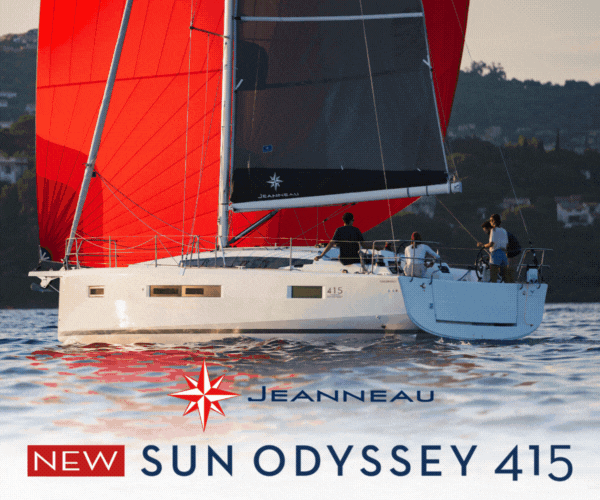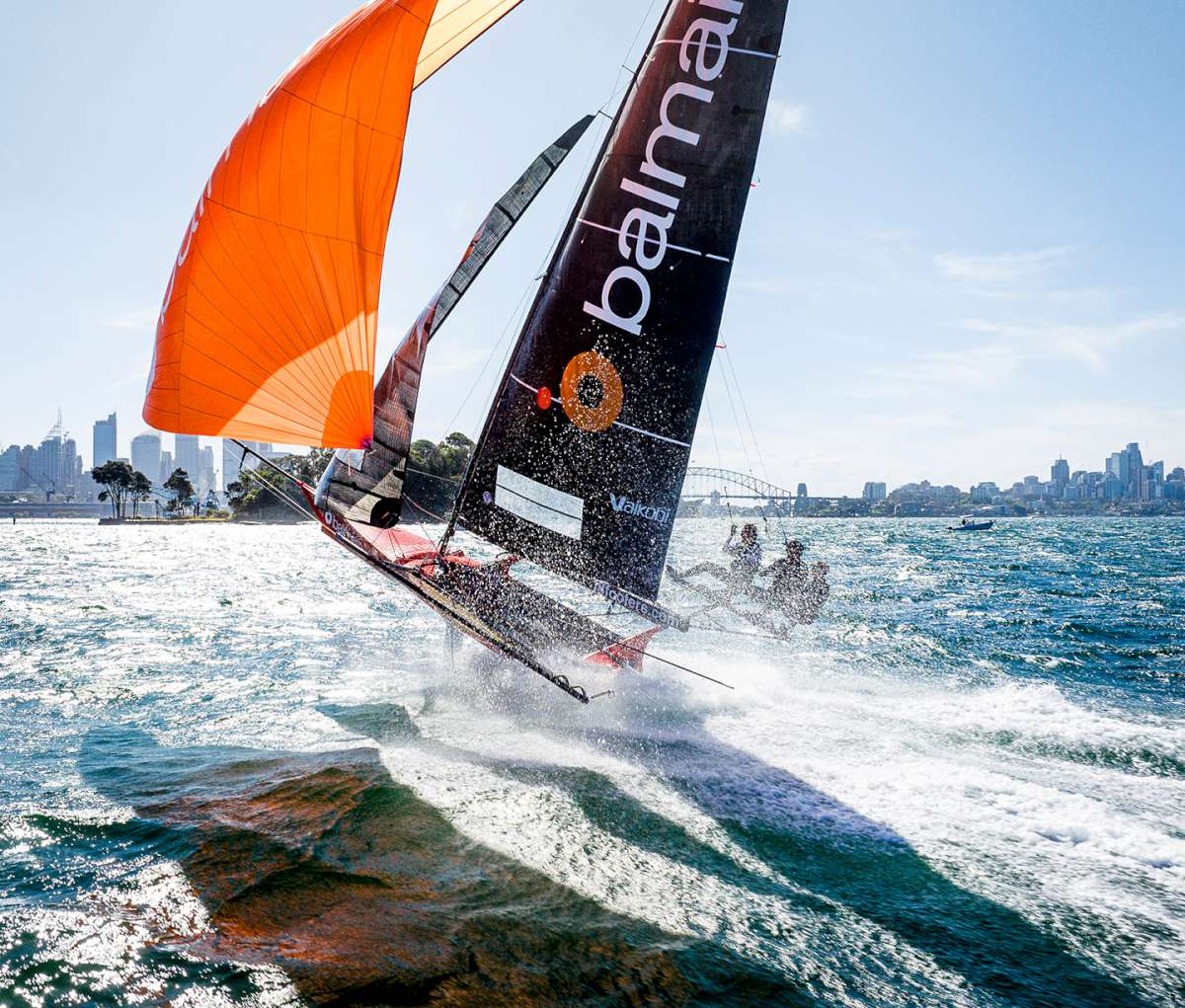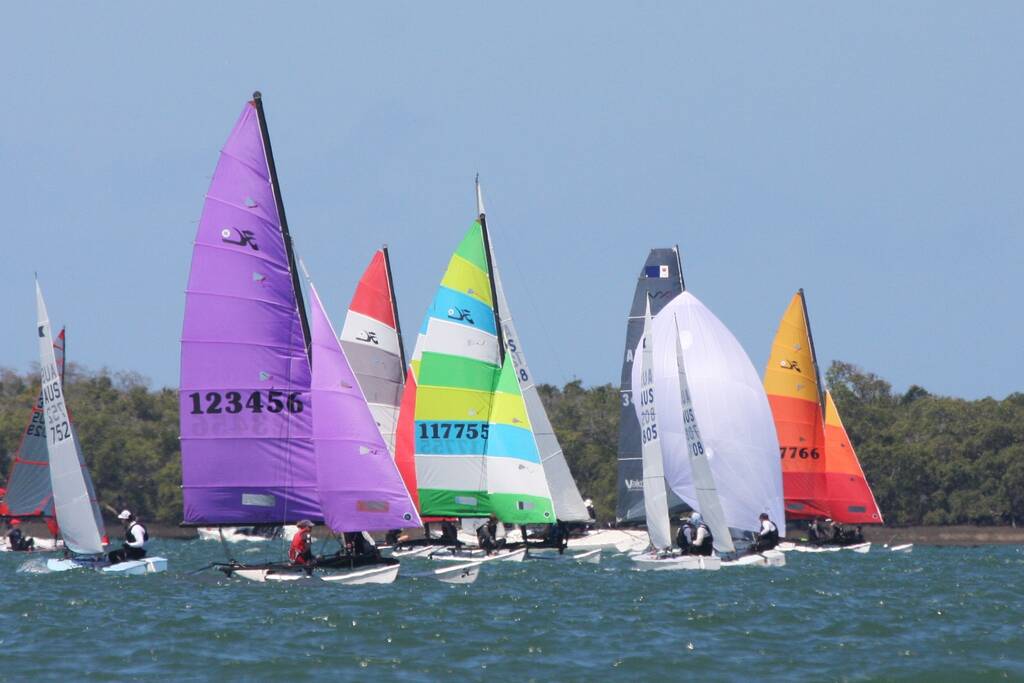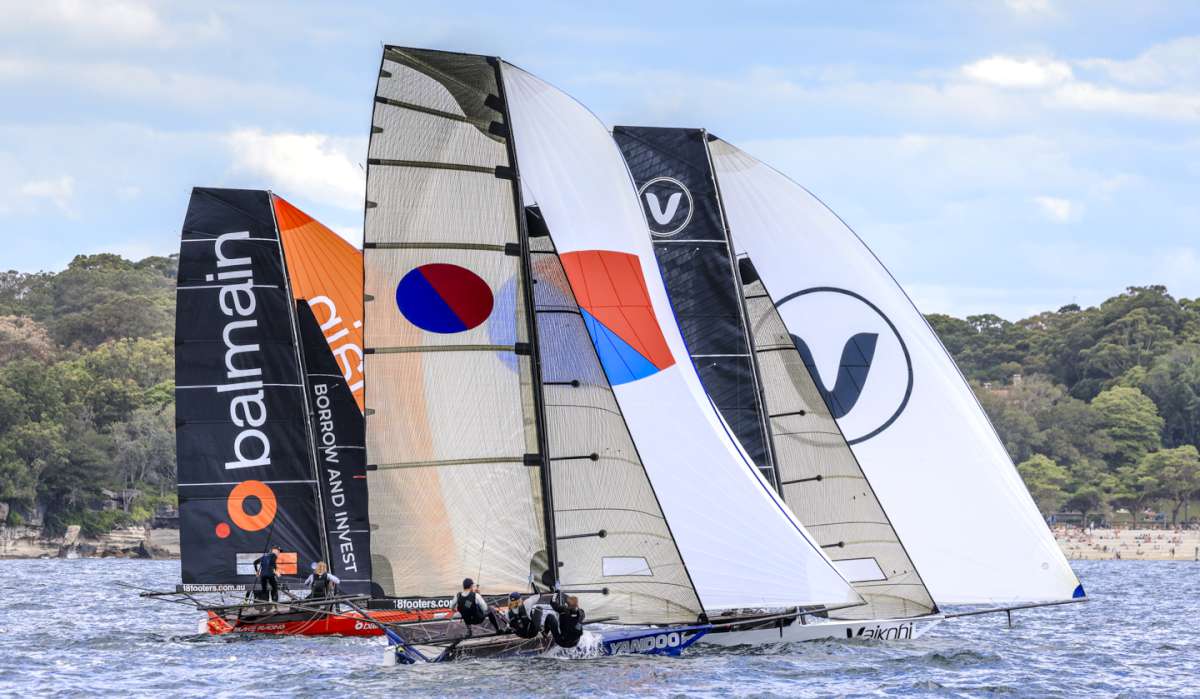Jill Knight revisits one of her favourite get-away-from-it-all destinations – the Newry Islands 25km north of Mackay.
“I hear they've done a lovely job there.”
The cruiser I had met casually on the dock in Mackay was responding to my statement that my mate Jim and I were stocking up for a longish stint at the Newry Islands, about 25 miles north. He must have noticed that I looked appalled at news of a lovely job.
“Oh yes, well . . . ” he said, acknowledging possible implications, “it probably does mean signs everywhere banning everything worth doing.”
Six years ago
Six years previously, Jim and I had spent several weeks anchored at the Newrys. For much of our time there we had the place to ourselves. It was not a popular stop for cruising boats, most preferring a night at Brampton or Goldsmith Island on the way to the real destination ð the Whitsundays – and we'd expected nothing in particular. It turned out to be one of those little backwaters that charm unexpectedly, and ever since that visit we had talked about going back and spending a winter there.
Over the following years, the islands shaped themselves in our imaginations as the perfect escape. We undoubtedly exaggerated the delights ð the bushwalks, koalas and echidnas, stunning rock formations, plentiful fish, campfire spots, eccentric huts left over from an old resort, the resort's dams and vegetable garden still producing ð and, most of all, the simple, out-dated aura that set the islands apart from their glamorous neighbours to the north. But regardless of time's embellishments, Jim and I were sure we could enjoy at least a couple of months there.
Now the suggestion that our dream destination might have been civilised and sanitised, its pleasures pruned to match some bureaucrat's notion of a modern tourist destination, alarmed me. Later that same morning I noticed that the islands had been included in the new edition of the 100 Magic Miles cruising guide and knew that change was inevitably afoot if not already a fait accompli.
We did not consider abandoning our plan, but completed provisioning uneasily. The next day gave us a lovely sail, but Cooee's anchor was barely down at Outer Newry when two National Parks officers motored over to welcome me and provide an information pack to make sure I was aware of the zonings and rules applying to activities on and around the islands. While I hate the intrusion of all the policing of cruising boats that goes on along the Queensland coast, I have always felt less resentful of the National and Marine Parks people whose role is usually educational rather than punitive. These two could not have guessed how their zeal unsettled me. They asked if I had visited before and were keen to answer my questions about the facilities and animal populations I remembered. They were clearly proud of their transformation of the old resort; as I sailed in I had been glad to see that it had, at least, not been exterminated.
The anchorage
The approach to what is called Port Newry on the chart is clear and deep as long as one does not cut close to the two islands south of the entrance ð Red Cliff and Mausoleum – where there are rocky hazards. There is a light on Mausoleum, on the port side going in, but the anchorage between Outer Newry and Newry will not be visible until the boat is well inside. While the entrance is easy, the anchorage itself has varying depths, including drying sand- and mud-flats; the remains of an old fishtrap and surrounding bommies mean particular care needs to be taken close to shore in the northern half of the bay. It is helpful to see the bay at low tide before committing to a final spot for an extended stay. The superb shelter from nearly all directions is one of the reasons why the cruising people who do stop here have trouble leaving. Another reason is the fairly sheltered water all the way to the mainland, to Victor Creek or the township of Seaforth:
Three large and three small
Three large and three small islands make up the group. All have national park status. While some of the marine park is zoned green, the popular fishing areas are still blue, meaning few restrictions on activities. Many of the oysters have lessees, but there are plenty left for everyone else outside leases and green zones.
History
The islands were once part of a mainland mountain range. They were named during a coastal survey in 1879, and several leaseholders have held parts of Newry and Outer Newry since then. The Newry Island Resort was established by Fred and Marcelle Wooster in 1934, and regular guests included marathon swimmer and Hollywood star Annette Kellerman, for whom a cabin was built. Cruising visitors will remember the last resort operator, Willy Litz, who ran things from 1978 until the area was taken over by National Parks in 2001. On Outer Newry, a fisherman named Fred Lapsley built a hut and this operated as a fishing camp for about 30 years before this whole island also went to National Parks.
The Newrys today
Jim and I began by renewing our acquaintance with Outer Newry Island. Fred's fishing hut had a new coat of paint. The rusted water tank supplied from its roof had been replaced, but inside were the same few useful items including a pan, kettle and shelf of books. Outside, the rock fireplace appeared well-used, while not far away was a new sign forbidding fires; the sign also summarised the history of the site. The hut, the fireplace and the weathered old On Newry Island, at the western edge of the anchorage, the resort had lain newly abandoned on our last visit. Now the old huts, sometimes just a couple of walls, had been made into a display of social history. There were weatherproof plaques telling the story of each building and black-and-white photos of memorable guests. The old Beachcombers Bar was unrecognisable; its roof fed a new water tank for campers, and nearby was a pair of remarkably odour-free long-drop toilets. Despite a long list of rules, campers seemed to be allowing common sense to direct their behaviour and still gathered around their beach campfires at night as, of course, the rule makers must have known they would.
All this was a little sanitised but okay. However, the garden was a severe disappointment. The banana trees had all gone. The tomatoes, chillis and pumpkins were dead and buried under a rampant, non-edible vine. One of the dams had been destroyed, but the other still held water above the resort. Nonetheless, the bushwalks, occasional koalas and echidnas, amazing rocks and protected waters were unchanged, and Cooee and Prosper settled in for an indefinite stay. Two lovely acquisitions since our previous stay were my sailing dinghy, my Molly Joy, and Jim's dog, Pebbles. After a week or two, our friend Max visited for several days and we sailed Molly Joy to collect her where the road ended at the Victor Creek launching ramp. The one-hour sail was a fun experience rather than the noisy chore it might have been. It was a big adventure for Pebbles. She stood at the bow all the way, shivering with excitement at every fish jump and turtle breath. We had been running her on the Newrys beaches, but let her off the lead to go wild at Victor Creek while we loaded the dinghy with the piles of food and wine Max had brought. It was fortunate, with the load we now carried, that the sail back to Cooee was downwind.
An embarrassing moment
One windy day after Max had left, Jim and I took his dinghy onto the resort beach to patch a hole in the bottom. While we waited for the patch to dry, Pebbles swam and dug in the sand for crabs and I wandered off into the bush. After a while there was a tremendous disturbance and barking and I could hear Jim shouting to ask me if I had Pebbles with me. I called her and she burst out of the bush, particularly pleased with herself. Jim reached me at the same time, and we pasted feeble smiles on our faces when we saw what it was that the pup had scared out from the undergrowth: a National Parks ranger. An earnest conversation followed and we were excused with a warning. We had kept a low profile for Pebbles, running her on the beaches and rocks but keeping her aboard whenever the rangers' boat was around. Because of the wind, on this day they had left their boat at Sunset Beach, and we were well and truly sprung. The really bad news was that the rules had recently changed in regard to dogs: it was now an offence for them even to be on the beaches. There is a big population of cruising dogs around coastal Queensland, and large areas are National Park. I wonder what the dogs will now do for exercise.
When commerce calls
Not long after this, Jim and I had to engage with the commercial world. We had been at the islands for six weeks or so; now I had a two-week job in Sydney and needed a plane ticket. We both had provisioning to do as we were returning to the security of the Newrys where Jim would take care of Cooee and ship's cat Fletcher while I was away. We had kept up fresh supplies by sailing Molly into the Seaforth markets on Sunday mornings, but now we needed a supermarket and a travel agent. Mackay was closer, but Airlie Beach and Cannonvale were easier in that everything could be done while at anchor rather than requiring a marina stay.
More things to do at the Newrys
Two weeks later we were back in the Newrys. I went to Sydney and back; Max For the not-so-creative or social there are some lovely walks around these islands: there are areas of eucalypt bush and patches of rainforest; there are cross-island trails cleared by the rangers, and all the islands except Rabbit may be circled on foot at low tide. The shores are generally rocky rather than sandy, but what rocks these are! The nicest beaches are on the eastern side of Rabbit Island. On the water a sailing dinghy is a boon, and towards the end of our stay Jim and I took Molly Joy to the western side of Rabbit, the one place we had not yet explored. As we sailed off across a stretch of open sea, two skinny old cruisers and a dog, a concerned man hopped in his dinghy and went to share his fears with a friend of ours.
“Do you think those kids will be okay?”
“Oh, I think they'll be all right,” our friend told him, “pretty experienced for their age.”
After a delightful sail and lunch aground on a mud-bank while we waited for the tide, we explored some great crabbing territory and a few good cyclone holes before heading for home. With sundown nigh we found ourselves with no wind, then an empty outboard fuel tank it hadn't occurred to me to fill, then a contrary tide, and finally, a broken rowlock. Were these kids not okay after all? We were pretty weary paddlers when we saw a little boat anchor for the night about half a mile ahead. With a bit of borrowed fuel we crept the last mile or so back to our boats. We kept Molly's sail up, though, to make it look like a triumphant return.
So, that's the Newry Islands today. Not quite the carefree backwater they were, but with the aura pretty much intact. Their inclusion in the cruising guide means you probably won't have them to yourself again, but, on the other hand, there will be enough friends around to make an old-fashioned barbecue as much fun as ever.
AUTHORS BIO.
Jill Knight has lived aboard Cooee for 25 years, and circumnavigated the world with her between 1983 and 1996. At the time of writing she was cruising the Queensland coast north of Mackay. Cooee is an 11.3m gaff cutter built in NZ for snapper fishing in 1894. Her hull is three skins of kauri, copper-riveted.
























